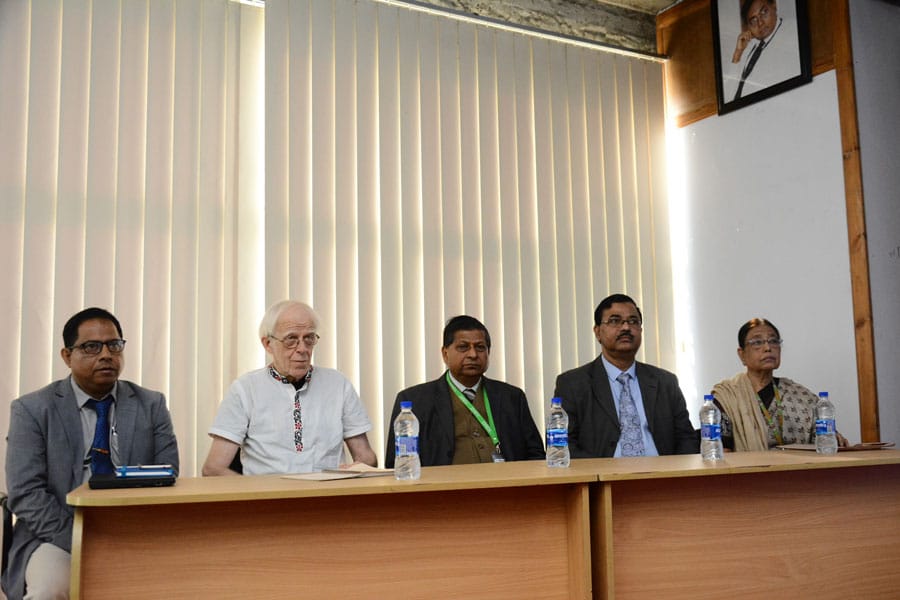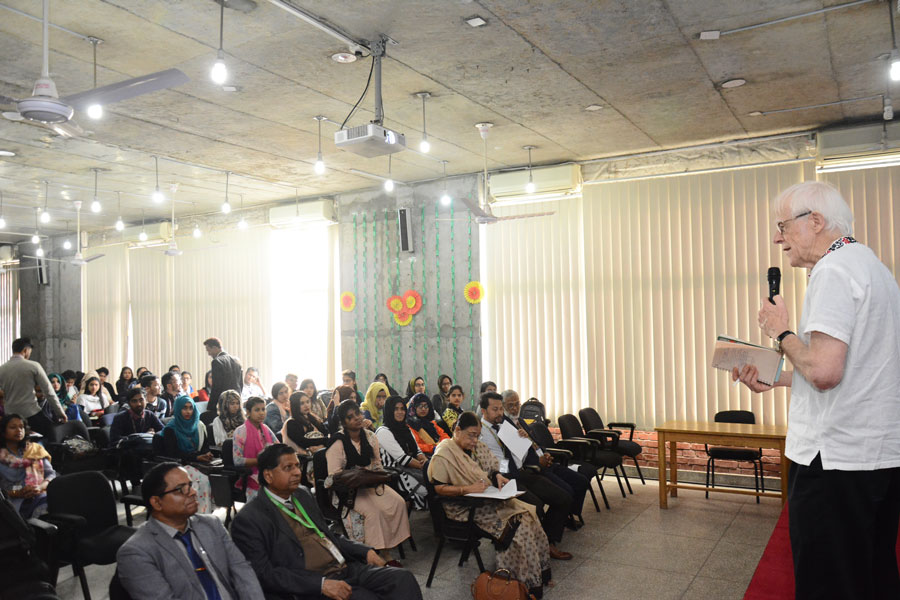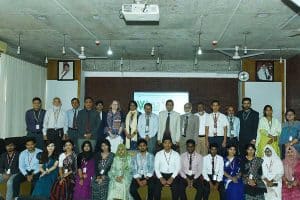Caesarean Section Delivery and Changing Landscape of Female Genital Fistula in Bangladesh
College of Nursing, IUBAT and Simon Fraser University, Canada organized a seminar on “Caesarean Section Delivery and Changing Landscape of Female Genital Fistula in Bangladesh” on 6 February 2020, Thursday as a part of month-long celebration of foundation day at IUBAT campus.
The Chief Guest of the seminar was Mr. Quazi A. K. M. Mohiul Islam, Director General, Family Planning, Ministry of Health and Family Welfare.
Prof. John Richards, Simon Fraser University, British Columbia, Canada and Dr. Sk. Nazmul Huda, Country Manager, Engender Health Bangladesh and Global Manager, Fistula Care Plus Project were the keynote speakers. Prof. Dr. Hamida Akhtar Begum, Pro Vice Chancellor of IUBAT was the Special Guest and Prof Dr Abdur Rab, Vice Chancellor; IUBAT presided over the seminar.
Fistula is probably the most tragic childbirth injury faced by women in Bangladesh which is known as Obstetric Fistula. Obstetric Fistula is caused by untreated, obstructed and prolonged labor which creates a hole between the birth canal and bladder or rectum, leaving women to leak urine, feces or both. In Bangladesh, over 19500 women are suffering from this disease. Probably, three fourths of all fistula cases at present are due to obstructed labor. It’s a devastating condition that often leads to social isolation, depression, and sometimes serious health conditions.
However, Bangladesh has committed to eliminate and attain zero incidence of obstetric fistula before 2030 as a response to the United Nation’s call.
But now, approximately half of the cases, female genital fistula are caused by gynecological surgery or caesarean section operations. Caesarean section is no doubt a solution for women at obstructed labor. The World Health Organization recommends a C-section rate of between 10% and 15% of all births per country. Since the current C-section rate in Bangladesh is 31%. However, rampant use of caesarean section is injudicious. Quality care is the key. In the meantime, we have to identify “is C-section benefited or not”?
In most cases, stigma pushes women living with the condition to hide and isolate themselves from their families and communities. With the systematic registration and tracking of each woman and girl who has or had an obstetric fistula, it is possible to make enormous strides in improving their well-being and increasing the chances of their babies’ survival during subsequent pregnancies.
The development of the action plan to end obstetric fistula is important because untreated fistula can have a devastating impact on women’s lives due to a whole range of health, psychological and socio-economic consequences.
Health team members, policymakers, decision makers should take initiatives to eliminate fistula with technical assistance and support in sensitization, case identification, referral for treatment and reintegration into the community.








